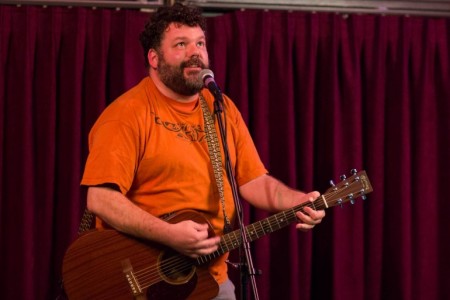January Meeting Recap
Hey songwriters,
The Jan. 3 meeting went well — bla bla bla — but the showcasing and discussion of the monthly songwriting assignment was outstanding.
Mention “songwriting mechanics” to some amateur songwriters and you get a blank stare. Sounds too complicated, too professional, too hard to think about what I’m doing, too … not fun.
But in the 12 years I’ve been working with this group, I’ve discovered that I and many others were unintentionally using long-established methods and techniques without knowing they actually have names. For me, it was incredibly reassuring, confirmation that maybe I was doing something right.
The songwriting assignment idea proposed by longtime Pittsburgh Songwriters Circle member Sue Gartland (suegartland@juno.com) was to write a song that includes a pre-chorus. Not surprisingly, some members said they didn’t do the assignment and then work-shopped a song that included a pre-chorus.
– For a definition, read this by hit songwriter and friend of the Songwriters Circle Jason Blume (www.jasonblume.com).
– To understand why your song may need a pre-chorus — or why your brain knew better and wrote one without your knowing it — imagine what a familiar song would sound like without its powerful pre-chorus:
“Imagine” by John Lennon. It’s easy, you can play this. Click on these guitar tabs and hover over the chords for finger positions.
Find the last two lines lines at the end of each verse: “Imagine all the people / living for today” (lyrics change with each verse). Notice how the verse grows musically when the chord pattern shifts from repeating C/Cm7/F in the first four lines (chord changes are at the beginning of each bar) to F/Am/Dm7/F G/CG/G7 in the last two lines (chord changes occur twice in each bar). The changes lift the emotional value of the verse before segueing to C for the familiar chorus: “You may say I’m a dreamer…”
Now that you’ve discovered the pre-chorus in Lennon’s song, take it out. Sing the song to yourself without those lines: “Nothing to kill or die for/ And no religion too/ You may say I’m a dreamer …”
Musically and lyrically, the song works without a pre-chorus, just as your song might seem fine without that optional bit of songwriting mechanics. But is “Imagine” as strong of a song without Lennon’s use of a simple songwriting device that sets up a powerful chorus? What could a pre-chorus could do for your song?
A last week’s meeting, while shuttling between Nashville and Washington, Pa., member Jordan Umbach (jordanumbach@gmail.com), backed on box drum by his brother Christian, silenced the room with a few of his newish contemporary country songs. The half-hour featured set preceded a robust open stage.
Next month, at the Feb. 7 meeting, in the featured slot for the first time witness the sharp piano pop sensibilities of Jon Eric (trickyhipster@gmail.com).
And because “pre-chorus” went so well, the suggested February songwriting assignment takes another look under the hood at song mechanics. As proposed by Brian Junker (junkerb@gmail.com), write a song that starts with the chorus. Hmmm.
– Leslie Gore “It’s My Party” by Wally Gold, John Gluck Jr. and Herb Weiner.
– The Beatles “Help,” Lennon/McCartney.
– Bob Marley’s “I Shot The Sheriff” and the popular Eric Clapton cover.
– “Edge of Seventeen” by Stevie Nicks.
– Meghan Trainor’s “All About That Bass,” cowritten by Kevin Kadish;
– “Let it Go“ by Wiz Khalifa and Jonathan Atangan with beats by E. Dan and Big Jerm.
See you soon,
– John




